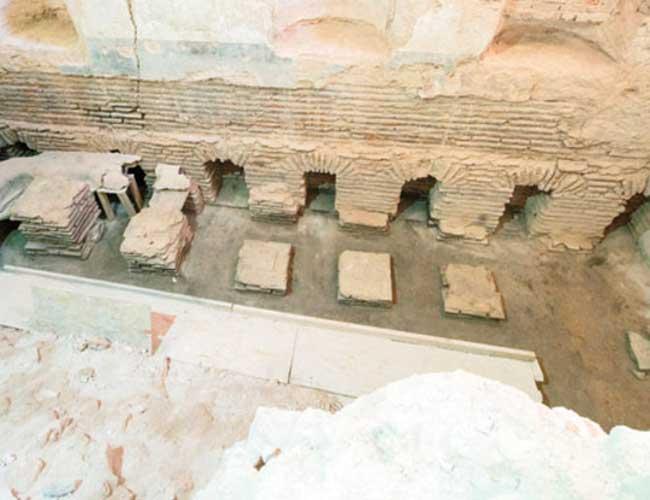Sultans’ bath discovered in Topkapı Palace
Ömer Erbil – ISTANBUL

A Turkish hamam used as a bath by five Ottoman Sultans has been uncovered during restorations in Topkapı Palace—the first and most famous of the sultans’ residences and administrative centers in Istanbul.
The newly discovered hamam, which has only been mentioned in written documents before, has come to light by chance during the restoration of the Dormitory of the Expeditionary Force (Seferli Koğuşu).
The relics of the ancient hamam will be covered with glass so visitors can visibly see the circulation of the cold and hot water supply systems, according to the authorities.
The ancient hamam was built during the construction of Topkapı Palace in the 1460s. It is thought to have been used for a total of 120 years by Ottoman sultans Mehmed the Conqueror, Bayezid II, Selim I, Suleiman the Magnificent and Selim II until the construction of the Baths of the Sultan known as “Hünkar Hamamı” in the 1580s by the court architect, Mimar Sinan.
The Topkapı Palace Museum is undergoing the most comprehensive restoration project in its history. The project is expected to cost about 220 million Turkish Liras ($56.4 million) with renovations in 24 sections.
While the restorers were in the “Seferli Koğuşu” section of the palace to fix the deformations in the floor, they came across relics from a time period other than the ward—which was constructed in 1635 under Sultan Murat IV.
The relics were initially thought to have belonged to the Roman period, but once the excavations expanded, art experts deduced that it was the first hamam built in the palace, as referred to in written historical documents.
“The big hamam or Enderun [Hünkar] hamam was built during the time of Mehmed the Conqueror. It was shut down in the beginning of the 16th century and turned into a ward for pages. It was later turned into the Seferli Koğuşu. The hamam was noticed during the period of the Republic of Turkey but it was covered. All of its elements have been revealed through scientific means for the first time during this restoration. We think it is the first hamam [in the palace],” Istanbul provincial director of culture and tourism, Coşkun Yılmaz told daily Hürriyet, adding that the restoration work on “Seferli Koğuşu” would completely protect the hamam’s relics.
The existence of this hamam had been referred to in a couple of books, but it was documented for the first time during restoration works, said Topkapı Palace Museum head Prof. Dr. Mustafa Küçükaşçı.
“Now, we want to make it visible. It is also important because it has traces of Mehmed the Conqueror. When the Hünkar Hamam was built, the first hamam was abandoned. The hamam in Seferli Koğuşu has also been named the ‘Hamam of Selim II,’” Küçükaşçı said.
Giovanantonio Menavino, a Genoese who served in the early 16th century as a page in the Topkapı Palace after being taken prisoner in 1505, referred to this ancient hamam in his account of the Ottoman Empire.
“The hamam is completely circular and vaulted. In the middle, there is a white marble pool from where chilly waters flow from expertly built gutters, in the length of two men. The hamam is always kept ready [for service],” Menavino said in his book.
















